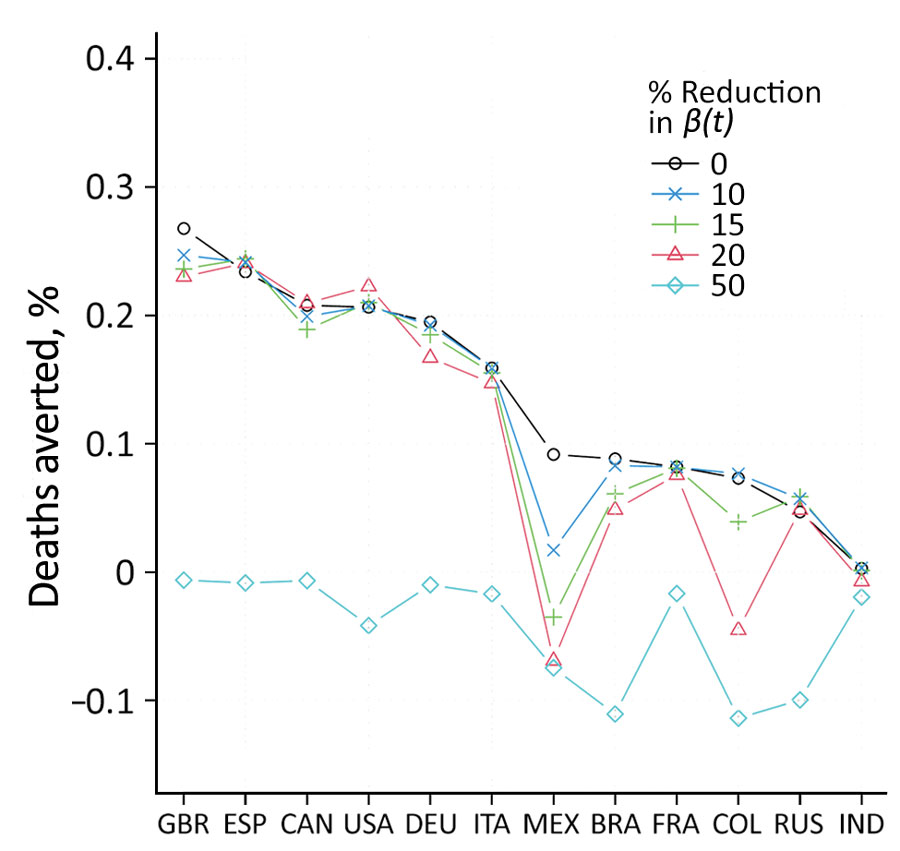Volume 28, Number 9—September 2022
Dispatch
Evaluation of Effectiveness of Global COVID-19 Vaccination Campaign
Figure

Figure. Deaths averted because of vaccination according to a model used to evaluate effectiveness of global COVID-19 vaccination campaign. The graph represents the difference in total deaths under the counterfactual scenario (without vaccination) and under the baseline scenario (with vaccination) as a percentage of the population. We compared 5 counterfactual scenarios under without-vaccination in which we set the transmission rates after April 16, 2021, to reduce by 0, 10%, 15%, 20%, and 50% compared with the baseline scenario. The y-axis 0.3% means 3 persons per 1,000 population were saved from COVID-19–related death because of vaccination. The absolute value of negative deaths averted results from substantial reduction in transmission rate, rather than vaccination. β(t), time-varying transmission rate; BRA, Brazil; CAN, Canada; COL, Colombia; DEU, Germany; ESP, Spain; FRA, France; GBR, Great Britain (United Kingdom); IND, India; ITA, Italy; MEX, Mexico; RUS, Russia; USA, United States.
1These authors contributed equally to this work.